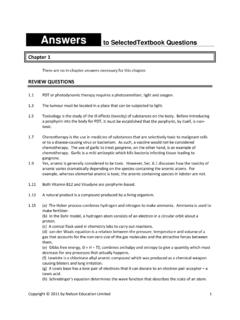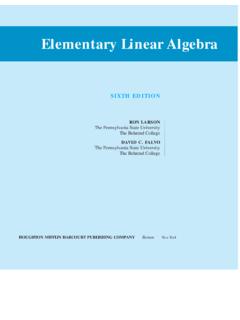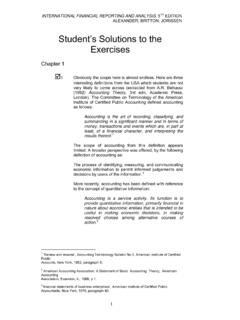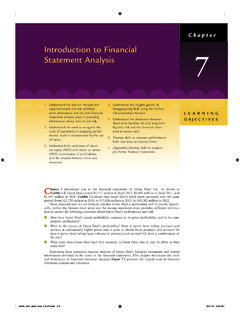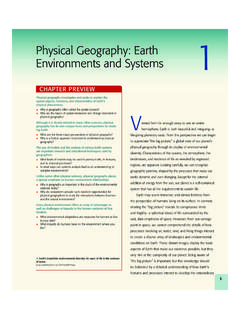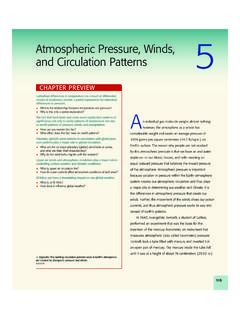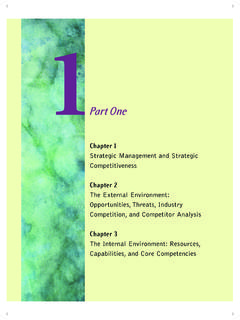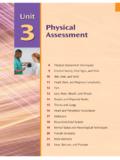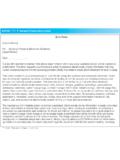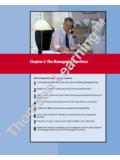Transcription of Personal Finance Activities - Cengage
1 Personal Finance Activities 1 2013 Cengage learning . All Rights Reserved. May not be copied, scanned, or duplicated, in whole or in part , except for use as permitted in a license distributed with a certain product or service or otherwise on a password-protected website for classroom use. Economics and Personal Finance Personal Finance Activities Contents Financial Planning Worksheet A: Short-Term and Long-Term Goals .. 3 Worksheet B: Plan to Save .. 4 Budgeting Worksheet A: Create a Short-Term Budget .. 5 Worksheet B: Budget Your 6 Risk and Reward Worksheet A: The Risk and Return Trade-Off .. 7 Worksheet B: Calculate Return on Investment .. 8 Jobs and Careers Worksheet A: Develop Your Competitive Advantage.
2 9 Worksheet B: Choose the Right Career .. 10 Opportunity Recognition Worksheet A: Recognize Business Opportunities .. 11 Worksheet B: Minimize Your Opportunity Cost .. 12 Investing Worksheet A: Design Your Portfolio .. 13 Worksheet B: Choose Stocks .. 14 Employment and Taxes Worksheet A: Calculate Your Net Take-Home Pay .. 15 Worksheet B: What the Government Does with Tax Revenues .. 16 2 Personal Finance Activities 2013 Cengage learning . All Rights Reserved. May not be copied, scanned, or duplicated, in whole or in part , except for use as permitted in a license distributed with a certain product or service or otherwise on a password-protected website for classroom use.
3 Saving for College Worksheet A: The Value of Education .. 17 Worksheet B: Create a Savings Plan .. 18 Calculating Future Value Worksheet A: Calculate the Future Value of Your Savings .. 19 Worksheet B: Predict the Future Value of Your Stock 20 Managing Credit Worksheet A: Build Your Credit History .. 21 Worksheet B: Know Your Credit Rights .. 22 Home Ownership Worksheet A: Choose a Mortgage Loan .. 23 Worksheet B: Financial Advantages of Home Ownership .. 24 Economic Factors Worksheet A: Leading Economic Indicators .. 25 Worksheet B: The Political Environment of Investment .. 26 International Trade Worksheet A: How Exchange Rates Are Set .. 27 Worksheet B: How Exchange Rates Influence Trade .. 28 Leadership Worksheet A: What Makes a Person a Leader?
4 29 Worksheet B: Develop Leadership Skills .. 30 Philanthropy Worksheet A: Evaluate Charitable Organizations .. 31 Worksheet B: Charitable Giving and Your Taxes .. 32 Personal Finance Activities 3 2013 Cengage learning . All Rights Reserved. May not be copied, scanned, or duplicated, in whole or in part , except for use as permitted in a license distributed with a certain product or service or otherwise on a password-protected website for classroom use. Financial Planning Worksheet A Short-Term and Long-Term Goals Everyone wants to make good decisions decisions that maximize benefits and minimize costs.
5 However, it can be hard to make good decisions when you aren t sure what you want to achieve. That s why setting goals and creating and following a financial plan with your goals in mind is so important. When you know where you want to be in the future, it is often easier to get there. Most of the day-to-day decisions you make are only single parts of the larger problem of getting what you want from life. Suppose you spend $20 to see a movie and go out for pizza with your friends. Your decision was made to achieve a short-term goal of immediate enjoyment. Remember, however, that whenever you make a choice, you also make a trade-off. The $20 you spent for pizza and a movie can t be spent or saved for something else. All of your decisions are related to each other, and so are your goals.
6 The $20 you spent for entertainment helped you reach a short-term goal. However, you no longer have that $20 to help you reach more important long-term goals. Suppose you had also decided to save $20 each week to make a down payment on a car in three years. The decision to save is a short-term goal, but it s one that can help you reach your long-term goal of owning a car. Your chances of reaching your most important long-term goals are better when you set short-term goals that help you reach them. Directions: Identify and explain two short-term goals that you could set today that would help you achieve the long-term goal identified. 1. Long-term goal: Become the owner of a clothing boutique. A short-term goal that would help achieve this would be to Another short-term goal that would help achieve this would be to 2.
7 Long-term goal: Become a special-education teacher to help disabled children learn. A short-term goal that would help achieve this would be to Another short-term goal that would help achieve this would be to 3. Long-term goal: Become a bank manager and help people and businesses obtain credit. A short-term goal that would help achieve this would be to Another short-term goal that would help achieve this would be to 4 Personal Finance Activities 2013 Cengage learning . All Rights Reserved. May not be copied, scanned, or duplicated, in whole or in part , except for use as permitted in a license distributed with a certain product or service or otherwise on a password-protected website for classroom use. Financial Planning Worksheet B Plan to Save You will need to spend money to achieve most of the long-term goals you set in your life.
8 It could be money to pay for your education, buy a house, raise a family, travel, start a business, and so on. Because you need money to achieve your most valued long-term goals, you also need to create a savings plan as a part of your overall financial plan. Saving is not something that just happens for most people. It is the result of careful planning and controlled spending. Consider Walter, who would like to save $300 per month toward the purchase of a home. Walter s income and spending in the past month are shown below. Use this information to answer the questions that follow. Walter s Income and Spending Income Spending Net (after tax) Wages $2, Rent/Utilities $ Interest Earned Food Stock Dividends Clothing Transportation Loan Payments Entertainment Insurance Other 1.
9 How much was Walter s income? 2. How much did Walter spend? 3. What change was there in Walter s savings? 4. Which types of spending could Walter adjust in the short run? Which types could he not adjust? 5. What would you recommend Walter do to reach his savings goal? Personal Finance Activities 5 2013 Cengage learning . All Rights Reserved. May not be copied, scanned, or duplicated, in whole or in part , except for use as permitted in a license distributed with a certain product or service or otherwise on a password-protected website for classroom use. Budgeting Worksheet A Create a Short-Term Budget Worksheet Some people spend their incomes without thinking of what they are doing or whether their buying decisions make much sense.
10 They may realize that they must pay their rent and insurance bills, or make monthly car payments. However, beyond these large and regular expenditures, things can get kind of fuzzy. It is not uncommon for people to run out of money from one paycheck to the next. Making and following a budget is an obvious answer to this problem, but it is hard to do when you re not really aware of where your money goes. To take control of your financial situation, you should first create a series of short-term budget worksheets. These are documents that record all income and spending that takes place over a specific period of time, most often one month. When bills, such as insurance, are paid only once or twice a year, you must include an appropriate share as spending in each worksheet.

